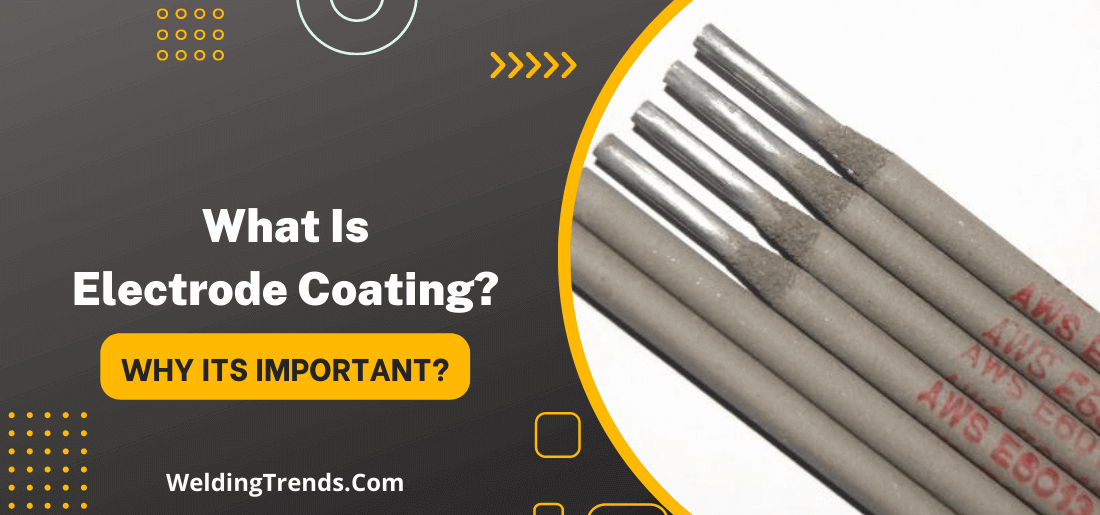Electrode coating is a process that is used to enhance and protect the electrodes in an electrical system. Welding electrodes are coated in various materials for a variety of reasons. Electrode coating material helps to protect the weld from excessive heat and contamination.
Welders also use coatings to change the electrical properties of the electrode, help identify it or add other functions. In this blog post, we will discuss the different types of electrode coatings and their benefits.
We will also examine why welders use coated electrodes and the advantages they offer over uncoated electrodes. So Stay tuned!
What is Electrode Coating?
Electrode coating refers to the process of applying a conductive layer to an electrode. This is usually done to improve the electrical properties of the electrode or to protect it from corrosion.
There are many different types of electrode coatings and they can be made from various materials. The most common types of coatings are made from metals but other materials such as polymers and ceramics can also be used.
There are many different methods of applying electrode coatings. The most common method is electroplating, where an electric current is used to deposit the coating material onto the electrode. Other methods include sputtering vapor deposition and chemical vapor deposition.
Electrode coatings can be applied to both new and used electrodes. however, it is more common to apply them to new electrodes since this allows for better control of the coating process. Used electrodes can also be coated but it is more difficult to achieve a uniform coating on these surfaces.
Why Welding Electrodes Are Coated?
Welding electrodes are coated for several reasons
- Welding electrodes are coated for protection against oxidation and moisture absorption. The coating also helps to reduce splatter and provides a stable arc during welding.
- The coating also helps to produce a good weld bead and enhances the overall quality of the weld.
- The electrode coating improves its handling characteristics, making it easier to use for longer periods without having to replace it.
- It reduces the risk of electric shock during welding as well as helps maintain a constant arc length for a smoother weld.
- The coating helps control the spatter and reduce heat input into the weld zone, which can help minimize warping and distortion.
- Finally, the coating protects the rod from corrosion and wear due to heat, sparks and slag that may come in contact with it during welding. This helps to improve the life of the electrode and increase its efficiency.
Types of electrode coating & welding electrode coating material
The most common types of electrode coatings are:
- Flux coated: A flux-coated electrode has a coating of flux material that helps to protect the weld from contamination and supports the formation of a strong weld.
- Hard facing: A hard-facing electrode has a coating of hard-facing material that helps to protect the weld from wear and abrasion.
- Metal cored: A metal-cored electrode has a core of metal that helps to improve the strength of the weld.
- Stick: A stick electrode has a coating of stick welding material that helps to improve the weld’s strength and durability.
- TIG: A TIG electrode has a coating of tungsten that helps to improve the weld’s electrical conductivity.
Most common materials used for electrode coatings are
- Aluminium: An aluminium electrode is used for welding applications that require a high degree of electrical conductivity.
- Copper: A copper electrode is used for welding applications that require a high degree of heat conductivity.
- Gold: A gold electrode is used for welding applications that require a high degree of electrical conductivity and a low melting point.
- Silver: A silver electrode is used for welding applications that require a high degree of electrical conductivity and a high melting point.
- Tungsten: A tungsten electrode is used for welding applications that require a high degree of electrical conductivity and a high melting point.
- Zinc: A zinc electrode is used for welding applications that require a high degree of corrosion resistance.
Which welding process uses coated electrodes?
- The most common welding process that uses coated electrodes is shielded metal arc welding (SMAW). This process employs an electrode that is coated with a layer of flux. The flux protects the weld pool from contamination and also provides a slag that covers the weld, protecting it from oxygen in the atmosphere.
- Other processes that use coated electrodes include gas-metal arc welding (GMAW) and flux-cored arc welding (FCAW).
- In SMAW the electrode is held in the hand of the welder and is dipped into the weld pool to maintain a constant arc length. The welder must constantly move the electrode around the circumference of the joint to ensure that the weld bead is evenly distributed.
- In GMAW the electrode is fed from a spool and is continuously consumed as it melts into the weld pool. This process is sometimes called MIG (metal inert gas) welding or wire welding.
- FCAW uses a flux-cored electrode that is fed from a spool. The flux surrounding the electrode core provides shielding, so this process does not require an external gas supply. FCAW is commonly used for welding thicker materials and welding in difficult-to-reach places.
How do electrode coatings affect the weld advantages of coated electrodes in the welding process?
There are a few key ways that electrode coatings can affect the weld advantages of coated electrodes:
- By providing a more stable arc.
- By protecting the electrode tip from oxidation.
- And Creating a slag that is easier to remove.
In general, a good electrode coating will result in improved weld quality, higher productivity and lower costs. However, it is important to note that the type of coating and the welding conditions can affect the final results.
For example, a harder electrode coating may be more difficult to remove but it will provide better arc stability and tip protection. So, it is important to consider all factors when choosing an electrode coating for your welding project.
Final Words
Electrode coating is a layer of material applied to the surface of welding electrodes to improve their performance and extend their life. This coating serves various purposes including protecting the electrode from oxidation, providing a stable arc and influencing the properties of the weld.
The type of coating used depends on the specific application and welding process. By coating welding electrodes, they are able to deliver consistent, high-quality welds and offer improved efficiency and cost savings in the welding process.
By understanding what electrode coating is and why it’s used you can be sure to weld correctly and create a strong bond between two pieces of metal.




